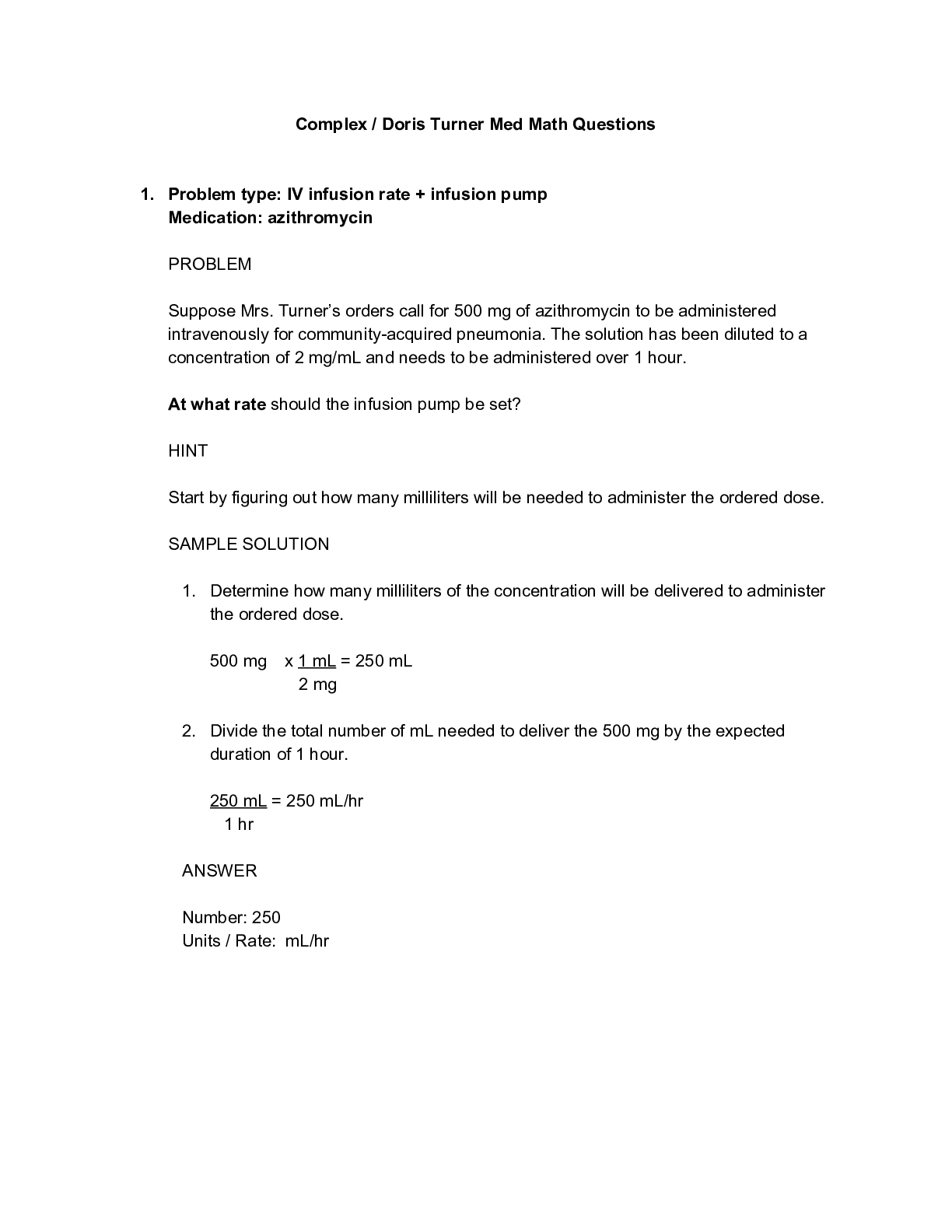Psychology > QUESTIONS & ANSWERS > PSYCH 230-Mental Health Exam; Questions with Answers (100% correct) (All)
PSYCH 230-Mental Health Exam; Questions with Answers (100% correct)
Document Content and Description Below
1. Which of the following characterize the disorder known as schizophrenia? a. Delusions and hallucinations b. Inappropriate emotions c. Disorganized speech and behavior *d. All of these 3. Accor... ding to statistical data, the prevalence of schizophrenia is about . a. 01% *b. 1% c. 5% d. 10% 4. In the 1850s, a French physician named Benedict Morel used the terms demence (loss of mind) and precoce (early, premature) to describe what we now know as schizophrenia because he observed that the onset of symptoms often occurs a. in the early part of the year. *b. during adolescence. c. in the morning. d. prior to symptoms of other mental illnesses. 5. Which of the following was the main characteristic of dementia praecox, according to Emil Kraepelin? a. Silly and immature behavior *b. Mental weakness c. Alternating immobility and agitated excitement d. Delusions of grandeur or persecution 6. In Observations on Madness and Melancholy, John Haslam characterized (what is now known as) schizophrenia as: a. dementia praecox. b. hallucinations, delusions, and negativism. *c. insanity. d. catatonia. 7. In the late 1800s, the German psychiatrist Emil Kraeplin made all of the following contributions to our knowledge of schizophrenia EXCEPT a. distinguishing dementia praecox (schizophrenia) from manic-depressive illness. b. noting that hallucinations, delusions, and negativism were symptoms of dementia praecox (schizophrenia). c. combining several symptoms of insanity (catatonia, paranoia, hebephrenia) that had usually been viewed as reflecting separate and distinct disorders. *d. conceptualizing a treatment for schizophrenic patients that is still being used today. 8. Which of the following is the definition for hebephrenia? *a. Silly and immature behavior b. Early madness c. Alternating immobility and agitated excitement d. Delusions of grandeur or persecution 9. Toward the end of the 19th century, Emil Kraeplin, studying the disorder we now call schizophrenia, used the term because he observed that the onset of symptoms often occurred before adulthood. a. adolescent insanity b. folie à deux c. catatonia previa *d. dementia praecox 10. The term "schizophrenia" was introduced circa 1908 by a Swiss psychiatrist named a. Emil Kraepelin. b. Sigmund Freud. *c. Eugen Bleuler. d. Phillipe Pinel. 11. Eugen Bleuler's concept of schizophrenia as an "associative splitting" o [Show More]
Last updated: 2 years ago
Preview 1 out of 24 pages

Buy this document to get the full access instantly
Instant Download Access after purchase
Buy NowInstant download
We Accept:

Reviews( 0 )
$10.00
Can't find what you want? Try our AI powered Search
Document information
Connected school, study & course
About the document
Uploaded On
Feb 09, 2021
Number of pages
24
Written in
Additional information
This document has been written for:
Uploaded
Feb 09, 2021
Downloads
0
Views
77














 A+ GUIDE.png)



